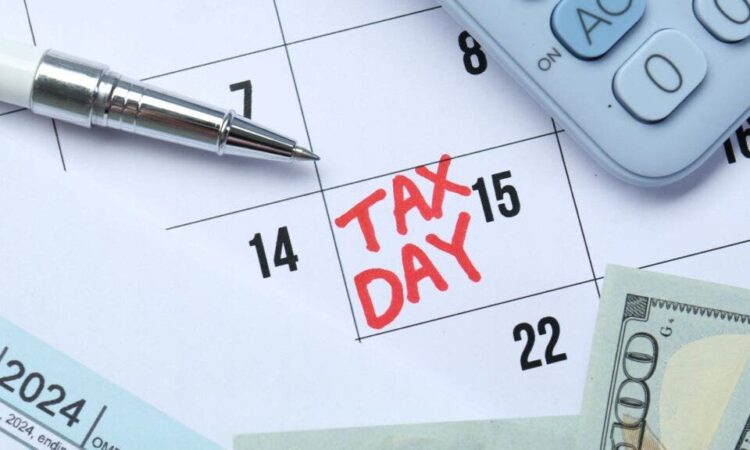

There are tons of interesting tidbits about Tax Day.
According to the Internal Revenue Service (IRS):
-
Officers answered more than one million taxpayer phone calls this season.
-
They processed over 100 million individual tax returns through April 6.
-
Tens of millions more filings will be made on the April 15 deadline.
-
About 19 million taxpayers will file extensions due Oct. 15.
-
More than $200 billion in refunds were already delivered.
-
The average refund was $3,011 — a 4.6% increase from last April’s average of $2,878.
These numbers change yearly, but there’s at least one fairly consistent Tax-Day trend: a jittery stock market.
According to Bankrate, citing data from S&P Global’s Kensho unit, the first couple weeks of April are typically “rougher.”
Many taxpayers will liquidate stocks or tap their money market funds to fulfill immediate cash requirements.
And from 2000 to 2016, the S&P 500 Index declined an average 0.2% during the first two weeks before Tax Day.
After Tax Day, it’s a different scenario. The S&P 500 usually bounces back to finish April about 1.7% higher on average (climbing “an astonishing” 75% of the time, Bankrate notes).
Per Money.com, the S&P 500 index enjoyed an average gain of 0.83% in the week following the tax deadline from 1998 to 2022 (for 19 out of 25 years). The one-week median gain throughout the year is 0.31%.
In April, the market’s overall impact is minimal. Investors would be wise to stick to their long-term investment strategy and prioritize contributing to tax-advantaged retirement accounts (i.e., 401k plans and IRAs).
Historically, the S&P 500 has yielded around 10 percent annual gains. The goal is to stay invested over time rather than attempting to time the market.
Financial advisors typically suggest that their clients invest in S&P 500 index funds (see below) and remain focused on distant future outcomes rather than short-term fluctuations.
-
SPDR S&P 500 ETF (NYSE:SPY)
-
iShares Core S&P 500 ETF (NYSE:IVV)
-
Vanguard S&P 500 ETF (NYSE:VOO)
-
iShares S&P 500 Growth ETF (NYSE:IVW)
-
Invesco S&P 500 Equal Weight ETF (NYSE:RSP)
Yardeni Research president Ed Yardeni predicts the S&P 500 could surge 26% by 2026 to 6,500.
“I think this is a long-term bull market,” the economist told CNBC in March. “I still got 5,400 by year-end and that was a pretty bold call a year ago, but right now that’s looking pretty conservative, and why not more?”
Now Read: Retail Sales Rises More Than Expected In March, Indicate Strong Consumer Spending
Image: Shutterstock
“ACTIVE INVESTORS’ SECRET WEAPON” Supercharge Your Stock Market Game with the #1 “news & everything else” trading tool: Benzinga Pro – Click here to start Your 14-Day Trial Now!
Get the latest stock analysis from Benzinga?
This article How Does The Stock Market Perform Ahead Of Tax Day? ‘Rough’ At First, Data Shows originally appeared on Benzinga.com
© 2024 Benzinga.com. Benzinga does not provide investment advice. All rights reserved.
